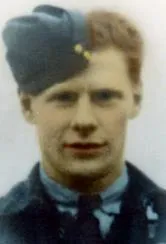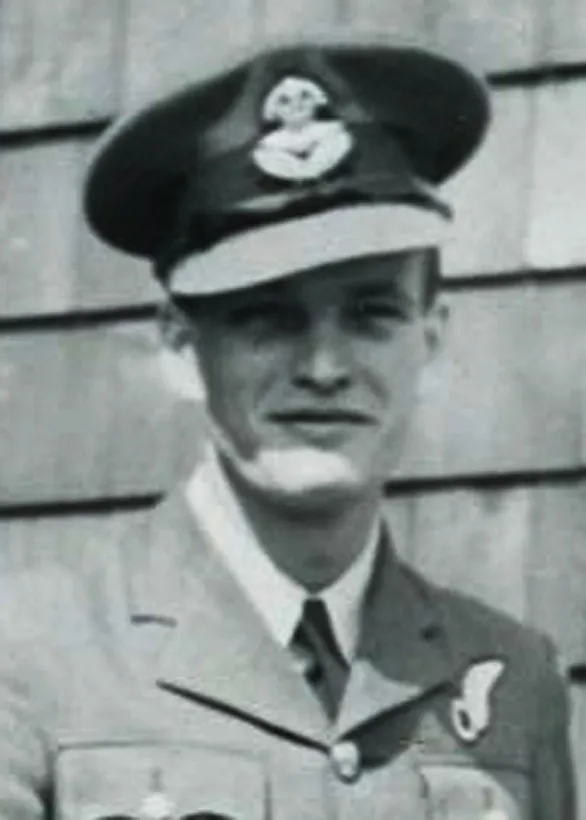Former Sergeant John Gale, Wireless Operator/Air Gunner (RAFVR) related an eyewitness account for 'John Gale's Heydekrug Run' by David Poissant.
John was keenly aware; their aircraft had suffered a flak hit and was on fire. He and Sergeant Frank Gower, Air Gunner RAFVR, in the rear section of the Mitchell high over Boulogne, had not heard a bailout order when John saw Ian Tweddell, their Navigator/Bomb Aimer, take to his parachute.
The intercom must be u/s..."Time to get out!" John called as he slapped Frank's arse to get him out of his turret seat in the smoke and melee of the stricken B-25. They jettisoned the rear crew door in preparation to bail out; "Frank was not wearing his parachute harness" John recalls, "I was helping him on with it, kneeling in front of him to get the connecting strap and buckle between his knees when the aircraft went into a power dive." Gordon Calder, their pilot, put the plane into a steep dive in an attempt to extinguish the fire. "We were thrown to the roof of the craft. Our pilot then put it into climb mode to put the fire out." When Calder pulled out of the dive the manoeuvre's centrifugal force hurled John, unscathed, through the open hatch; Frank must have collided with the aircraft floor. "I was shot out at the end of the dive" John said, "the chute shot off my chest and was hanging at the end of the straps, vibrating; I just reached down and pulled the handle...opened with a bang!" John was travelling at a considerable speed when his parachute opened with a yank, the force of which ruptured his diaphragm...an injury that would bother him for years. He saw their aircraft, still on fire, climb after pulling out of the dive and then saw his pilot bail out. Pilot Officer Calder's parachute was aflame; he didn't survive. The aircraft went into a spin; it would have been impossible for Frank to get out, even if he was conscious. Suspended in his parachute, John watched as B-25C Mitchell II FL197 (41-12757) crashed into the sea near Hardelot, France.
It was noon on Sunday, 13 May 1943; they had just bombed the Boulogne Marshalling Yards on their 13th operation (including 2 Air Sea Rescue searches) with 98 Squadron RAF. Their first "˜op' had been 22 Jan 43, which was also 98 Squadron's first of WWII; and the first for the Mitchell they had flown on that operation, FL176 VO-B "˜Grumpy'.
Sergeant Gale had little time for reflection; he was over the sea, anxiously steering his parachute for the dry landing he soon experienced. A group of German soldiers that watched his descent were waiting a short distance away as he landed; "sit still" a voice called "you are among mines." An officer arrived shortly and directed John through the mines and took him to an interrogation hut.
In a follow-up letter to David, John wrote "When I was shot down it [was] awful to see my pilot go down with his parachute on fire! It was my pilot's action at the time that saved my life.



